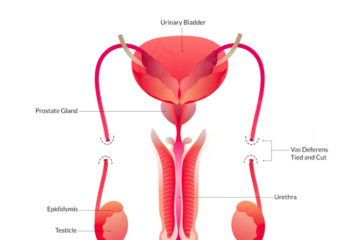
In a world where information is at our fingertips, it’s crucial to shed light on topics that continue to impact millions of lives globally. Among these, the realm of sexually transmitted diseases (STDs) stands as a critical arena for awareness and education. In this comprehensive blog post, we embark on a journey to unravel the intricate details surrounding HIV/AIDS. By delving into the facts, and fostering a deeper understanding, we aim to empower readers with knowledge that transcends boundaries, fostering a world where stigma is replaced by empathy and informed choices. Join us as we navigate through the layers of information, unravelling the hidden realities of these prevalent health concerns.
Understanding HIV/AIDS
HIV (Human Immunodeficiency Virus) is a virus that specifically targets and weakens the immune system, particularly the CD4 cells (T cells), which play a crucial role in the body’s defence against infections. Transmission occurs through unprotected sexual intercourse, sharing of needles, or from an infected mother to her child during childbirth or breastfeeding. If left untreated, HIV can progress to its advanced stage, known as AIDS (Acquired Immunodeficiency Syndrome). AIDS is characterized by a severely compromised immune system, making individuals more susceptible to opportunistic infections and certain cancers. Effective treatment with antiretroviral therapy (ART) can manage the virus, allowing those with HIV to lead healthy lives and, when adhered to properly, can suppress the viral load to undetectable levels, reducing the risk of transmission. Addressing stigma, promoting awareness, and fostering support are integral components of comprehensively understanding and managing HIV/AIDS.
Transmission
HIV (Human Immunodeficiency Virus) is primarily transmitted through specific bodily fluids that carry the virus. The main modes of transmission include:
Unprotected Sexual Intercourse: The most common mode of transmission is through unprotected vaginal or anal intercourse with an infected person. The virus can enter the bloodstream through small tears or mucous membranes.
Sharing Needles or Syringes: HIV can be transmitted through the sharing of needles or syringes during drug use. Contaminated needles expose individuals to the virus, as it can survive in blood outside the body for a short period.
Mother-to-Child Transmission: HIV can be transmitted from an infected mother to her child during childbirth or breastfeeding. Without intervention, the risk of transmission is higher, but antiretroviral medications during pregnancy and delivery significantly reduce this risk.
Blood Transfusions and Organ Transplants: Although rare in countries with strict screening procedures, HIV can be transmitted through blood transfusions or organ transplants if the donor is infected.
Occupational Exposure: Healthcare workers can be at risk of HIV transmission if they are accidentally exposed to contaminated blood through needlestick injuries or other accidents.
It’s crucial to note that HIV is not transmitted through casual contact, such as hugging, kissing, sharing utensils, or insect bites. Understanding the modes of transmission is fundamental to implementing preventive measures and reducing the spread of HIV.
As for AIDS (Acquired Immunodeficiency Syndrome), it does not have a direct mode of transmission because AIDS is not a separate virus. Instead, it is the final stage of HIV infection. When the immune system becomes severely damaged by the continuous attack of HIV, opportunistic infections or certain cancers take advantage of the weakened immune defences, leading to the progression to AIDS. AIDS itself is not transmitted; it is a condition that results from untreated or poorly managed HIV infection.
Prevention
Preventing the transmission of HIV and the progression to AIDS involves a combination of education, awareness, and the adoption of safe practices. Here are key strategies for the prevention of HIV and AIDS:
Prevention of HIV Transmission:
Condom
Consistent and correct use of male or female condoms during sexual intercourse is an effective barrier method to prevent the transmission of HIV and other sexually transmitted infections.
Pre-Exposure Prophylaxis (PrEP)
PrEP involves the use of antiretroviral medications by individuals at higher risk of HIV to reduce the likelihood of infection. It is a preventive measure recommended for those engaging in high-risk behaviours.
Needle and Syringe Programs
Providing access to clean needles and syringes reduces the risk of HIV transmission among individuals who use injectable drugs. Needle exchange programs contribute to harm reduction.
Testing and Knowing Your Status
Regular testing for HIV encourages early detection and facilitates timely intervention. Knowing one’s status is crucial for preventing the unintentional transmission of the virus.
Post-exposure prophylaxis (PEP)
PEP involves taking antiretroviral medications after potential exposure to HIV (e.g., unprotected sex, needlestick injuries). It is a short-term intervention to prevent infection.
Education and Awareness
Comprehensive sex education programs promote awareness, dispel myths, and empower individuals to make informed choices regarding their sexual health.
Prevention of AIDS Progression:
Early Diagnosis and Treatment
Early detection of HIV through regular testing enables prompt initiation of antiretroviral therapy (ART), preventing the progression to AIDS.
Adherence to Antiretroviral Therapy (ART)
Strict adherence to prescribed ART regimens is crucial in controlling the replication of the virus, preserving immune function, and preventing the advancement of AIDS.
Access to Healthcare
Ensuring universal access to healthcare services, including testing, treatment, and support services, is essential in preventing AIDS-related complications.
Supportive Care
Providing holistic care, including mental health support, nutrition, and management of opportunistic infections, enhances the overall well-being of individuals living with HIV and prevents complications.
Preventive Vaccines
Research continues on developing vaccines that can prevent HIV infection or delay the progression to AIDS. While no HIV vaccine is currently available, ongoing efforts aim to advance vaccine research.
By combining these preventive measures, communities and individuals can contribute to reducing the incidence of new HIV infections and improving the quality of life for those living with HIV, ultimately working toward the goal of an AIDS-free future.
Treatment and Living with HIV/AIDS
The treatment landscape for HIV has evolved significantly, allowing individuals living with the virus to lead fulfilling lives. Effective management involves a combination of antiretroviral therapy (ART), regular medical monitoring, and holistic support. Here’s a closer look at the treatment options and considerations for living with HIV and AIDS:
Treatment of HIV:
Antiretroviral Therapy (ART)
ART is the cornerstone of HIV treatment. It consists of a combination of antiretroviral drugs that target different stages of the HIV life cycle, inhibiting the virus’s ability to replicate.
Initiation and Adherence
Early initiation of ART, often regardless of CD4 cell count, is recommended to ensure optimal outcomes. Adherence to the prescribed medication regimen is crucial for the effectiveness of treatment.
Viral Load Monitoring
Regular monitoring of viral load helps assess the effectiveness of ART. Achieving and maintaining an undetectable viral load is a key goal, as it not only benefits the individual’s health but also prevents the sexual transmission of HIV.
CD4 Cell Count Monitoring
CD4 cell counts are monitored to assess immune function. As ART helps restore CD4 cell counts, it contributes to immune system recovery.
Drug Resistance Management
Resistance to antiretroviral drugs can occur. Regular monitoring helps identify any emerging resistance and guide adjustments to the treatment plan.
Living with HIV:
Healthy Lifestyle Choices
Adopting a healthy lifestyle, including regular exercise, a balanced diet, and adequate sleep, contributes to overall well-being and immune system support.
Mental Health Support
Living with HIV can pose emotional challenges. Mental health support, including counselling and peer networks, is essential for managing stress, anxiety, and depression.
Disclosure and Stigma Management
Deciding when and how to disclose one’s HIV status is a personal choice. Strategies for managing and reducing stigma, both internal and external, play a crucial role in mental and emotional well-being.
Regular Medical Check-Ups
Routine medical check-ups and monitoring help manage HIV-related and unrelated health issues, contributing to a proactive approach to overall health.
Preventive Measures
Individuals living with HIV should take preventive measures to avoid opportunistic infections. This includes vaccinations, prophylactic medications, and regular health screenings.
Sexual Health and Relationships
Open communication with sexual partners, safe sexual practices, and the use of preventive measures (e.g., PrEP for partners) are essential for maintaining both sexual health and preventing transmission.
Support Networks
Engaging with support groups and networks can provide valuable emotional support and practical advice, fostering a sense of community.
It’s important to note that effective treatment and a supportive environment have transformed HIV from a once life-threatening condition to a manageable, chronic illness. Advances in medical research continue to enhance treatment options and improve the quality of life for those living with HIV, emphasizing the importance of comprehensive care and a holistic approach to well-being.
Conclusion
In the culmination of our exploration into the realm of HIV/AIDS and other sexually transmitted diseases (STDs), it becomes evident that knowledge is a powerful tool in the fight against these health challenges. Our journey through the intricacies of HIV transmission, prevention strategies, treatment modalities, and the nuances of living with HIV has underscored the importance of awareness, empathy, and accessible healthcare.
Breaking down the barriers of stigma, and fostering a global community that champions comprehensive sex education and healthcare accessibility. It is through collective efforts, empathy, and continued dialogue that we can pave the way for a future where these health issues are not only better understood but also met with compassion and support. Let this knowledge empower us to make informed choices, advocate for change, and contribute to a world where everyone can enjoy the right to a healthy and fulfilling life.
Dr. Sumit Sharma is an experienced urologist, andrologist, and kidney transplant surgeon with over 20 years of clinical experience. He is the founder of the Department of Urology at multiple hospitals in Gurgaon and has established successful kidney transplant programs across the city.
With a commitment to the highest standards, Dr. Sumit Sharma ensures personalised, professional treatment, making your well-being the primary focus. Choose Dr. Sumit Sharma for outstanding Urological care in Gurgaon.



